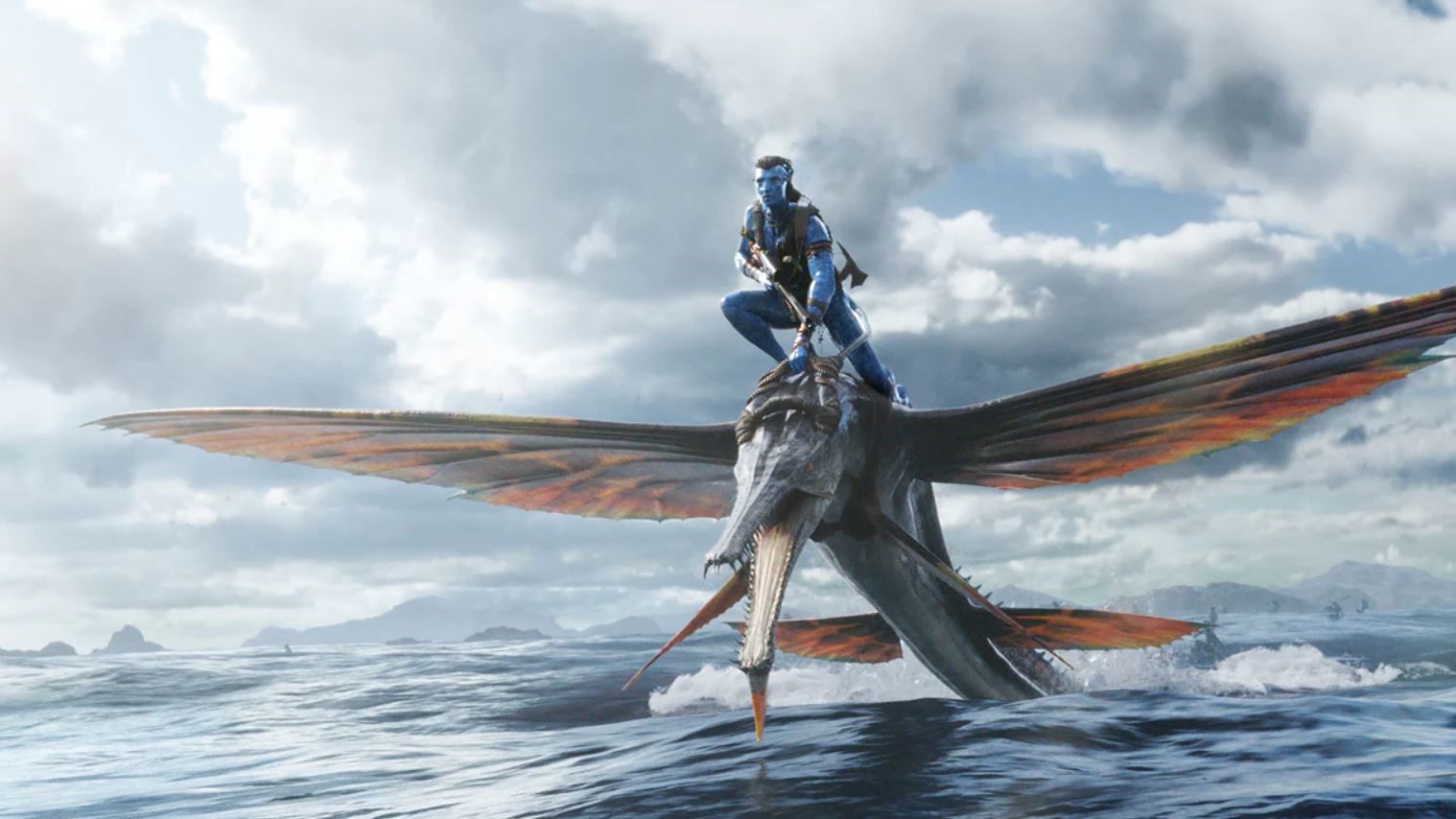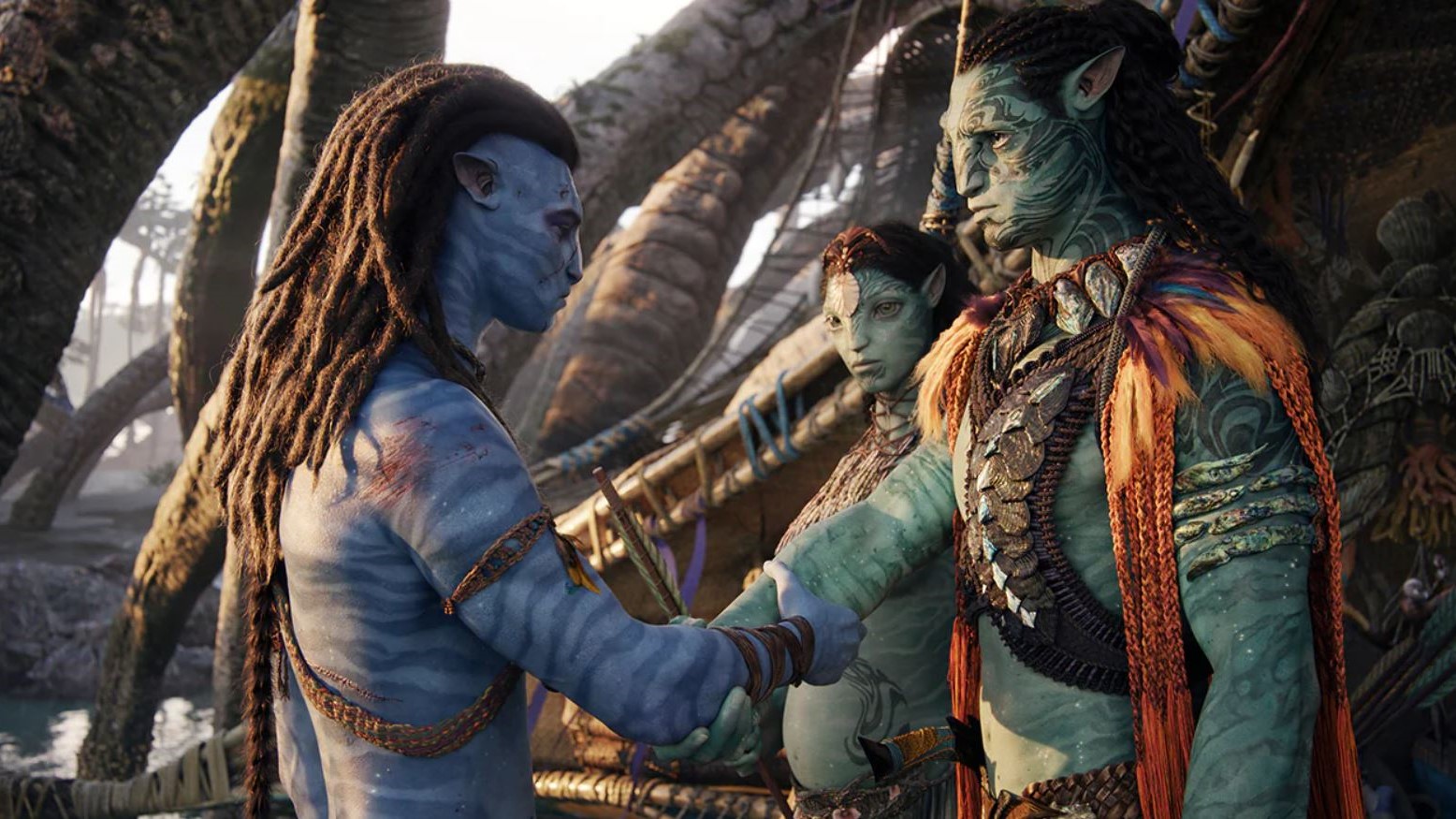What to Watch Verdict
While beautiful to look at with thrills along the way, Avatar: The Way Of Water relies on cliched storytelling and has an off-puttingly long runtime.
Pros
- +
Excellent special effects that immerse us in the world building
- +
Genuinely thrilling in places
Cons
- -
The storytelling is quite cliched
- -
A very long runtime might put viewers off
Back in 2009, James Cameron’s epic sci-fi fantasy adventure Avatar was a jaw-dropping wonder. His use of groundbreaking motion-capture animation and beyond-state-of-the-art 3D proved so eye-bogglingly immersive that even skeptics (I was one) were prepared to overlook the film’s flaws and luxuriate in its visual splendor. Who cared that the characters were one-dimensional when the 3D was this dazzling? However, thirteen years later, now that Avatar’s long-delayed sequel is finally here, Cameron’s special effects no longer seem so special, while his concept’s flaws are even more apparent.
Avatar: The Way of Water takes place more than a decade after its predecessor. Sam Worthington’s doughty hero, ex-marine Jake Sully, is happily living on the alien world of Pandora, having previously gone native and led the indigenous rainforest dwelling Na’vi — 10-foot tall humanoids with blue skins and long tails — to victory against the invading humans seeking to exploit Pandora’s mineral wealth. He has permanently taken on his genetically engineered avatar body, a human-Na’vi hybrid, and has a rumbustious brood of kids with his beautiful Na’vi wife, Neytiri (Zoe Saldana).
Now, however, the rapacious humans are back, and so is Jake’s dead nemesis from the first film, gung-ho warrior Colonel Miles Quaritch (Stephen Lang), who has been resurrected along with a number of his men as ‘Recombinants’, avatars endowed with the consciousness of their former human selves.
Their goal: stamp out the Na’vi insurgency and kill its leader. To evade Quaritch and his remorseless soldiers, Jake and his family have to leave their rainforest home and seek refuge among the Metkayina people, a reef-dwelling clan of green rather than blue-skinned people. But Quaritch’s ruthless scorched earth tactics are even more remorseless on water than on land.
The film’s new setting allows Cameron to show off his dense world-building, creating an elaborate aquatic environment rather than a lush forest one and inventing a set of outlandish, gargantuan creatures to inhabit it. Unfortunately, while immersing us in this watery world, Cameron also indulges his propensity for cliched storytelling.
Too much time is spent following Jake’s rebellious teenage sons, Neteyam (James Flatters) and Lo’ak (Britain Dalton), as they clash with their prejudiced Metkayina peers and experience the stirrings of young love across the clan divide. Given that watching the film involves an investment of more than three hours of wearing 3D spectacles, many viewers will wish Cameron had dished the teen-movie stereotypes for more of the action spectacle that is his undoubted strength.

When Cameron does cut to the chase, the results are genuinely thrilling. The performance-capture technology he spent so long perfecting (one of the major reasons behind the film’s delayed appearance) enables him to construct exciting sustained sequences of underwater derring do. Along the way, Kate Winslet, who plays Matkayina matriarch Ronal, broke Tom Cruise's free-diving record during the making of some of these.
The latest updates, reviews and unmissable series to watch and more!
To get to the best bits, however, the viewer first has to wade through an ocean of soggy dialogue (sample: ‘wherever we go this family is a fortress’). Yes, the film looks spectacular — but such have been the strides in film and TV in the past decade, so now do David Attenborough’s wildlife documentaries. For me, the sight of a great white shark launching itself out of the water in Blue Planet II is far more awesome and sublime than a CGI fantasy creature doing something similar here.
The film’s biggest downer isn’t that it took five writers to come up with the story and three, including Cameron, to write the screenplay. What is most disheartening about Avatar: The Way of Water is that the ecological message at the film’s heart remains the same as that of Avatar, reminding us how little has been done since 2009 to halt the ongoing devastation of the planet. The message will undoubtedly remain the same in the further three sequels Cameron is planning — a total of five Avatar films — but whether audiences turn out in sufficient numbers for The Way of Water to enable him to complete them remains to be seen.
Avatar: The Way of Water is in cinemas from Friday, December 16.
A film critic for over 25 years, Jason admits the job can occasionally be glamorous – sitting on a film festival jury in Portugal; hanging out with Baz Luhrmann at the Chateau Marmont; chatting with Sigourney Weaver about The Archers – but he mostly spends his time in darkened rooms watching films. He’s also written theatre and opera reviews, two guide books on Rome, and competed in a race for Yachting World, whose great wheeze it was to send a seasick film critic to write about his time on the ocean waves. But Jason is happiest on dry land with a classic screwball comedy or Hitchcock thriller.


